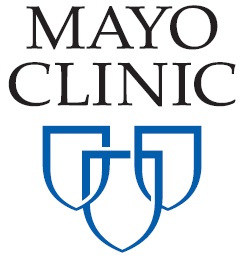In June, we focused on “When is the right time to get screened.” Now, that you have crossed the road to consider getting screened for colorectal cancer. It may have been because of family history, hitting age 50 or you and a doctor determining “something is just not right, time to push the button.” Now what?
If you are like most people living in our information highway era, too much information coming at you can be overwhelming. Sometimes it may just be as simple to do what the doctor or Aunt Janet tells you to do.
You might hear from an online patient support group about DNA testing, blood testing, alternative holistic approaches and you name it. So, let’s keep it simple and look at the available screening options if you are getting screened for the first time. Then, you can be informed, before the doctor or Aunt Janet tell you what to do, because it is your body, your life and your decision.
 Our partners at the Mayo Clinic provided the following four summaries of standard colorectal cancer screening tests:
Our partners at the Mayo Clinic provided the following four summaries of standard colorectal cancer screening tests:
Colonoscopy
A colonoscopy is an exam used to detect changes or abnormalities in the large intestine and rectum. A long, flexible tube (colonoscope) is inserted into the rectum. A tiny video camera at the tip of the tube allows the doctor to view the inside of the entire colon.
- Pros: Colonoscopy is considered the gold standard for colon cancer screening. Polyps or other types of abnormal tissue can be removed through the scope during the exam. Tissue samples (biopsies) can be taken as well. The exam takes 20 minutes to an hour.
- Cons: The test may not detect all small polyps and cancers. You may need to adjust your usual medications before the exam. Solid food can’t be eaten the day before the exam. Emptying the colon with laxatives, enemas or both can be unpleasant. Sedation is recommended. Rare complications may include an adverse reaction to the sedative, bleeding from the site where a biopsy was taken or a polyp or other abnormal tissue was removed, or a tear in the colon or rectum wall. It may take a day for the sedative to wear off. Bloating may occur for a few hours after the exam.
Virtual Colonoscopy
A virtual colonoscopy (computerized tomography colonography) is an exam used to detect changes or abnormalities in the large intestine and rectum. A catheter is placed inside the rectum to fill the colon with air or carbon dioxide. Computerized tomography (CT) is used to produce cross-sectional images of the abdominal organs.
- Pros: Unlike traditional colonoscopy, virtual colonoscopy doesn’t require sedation or the insertion of a scope into the colon. The exam takes about 10 minutes.
- Cons: The test may not detect all small polyps and cancers. You may need to adjust your usual medications before the exam. Solid food can’t be eaten the day before the exam. Emptying the colon with laxatives, enemas or both can be unpleasant. An adverse reaction to the contrast agent sometimes used during virtual colonoscopy is possible. Radiation exposure may be a concern. Biopsies can’t be performed during the procedure. If an abnormality is detected, a colonoscopy may be necessary. Bloating may occur for a few hours after the exam. Many doctors consider virtual colonoscopy experimental.
Fecal occult blood test
A fecal occult blood test is a lab test used to check stool samples for hidden (occult) blood.
- Pros: Stool sample collection can be done at home. There’s no need to empty the colon ahead of time.
- Cons: The test fails to detect most polyps and some cancers. Certain foods and medications must be avoided for three days before the test. If blood is detected, additional tests may be needed to determine the source. False-negative and false-positive results are possible.
Flexible sigmoidoscopy
A flexible sigmoidoscopy is an exam used to evaluate the lower part of the colon. A thin, flexible tube (sigmoidoscope) is inserted into the rectum. A tiny video camera at the tip of the tube allows the doctor to view the inside of the rectum and most of the sigmoid colon.
- Pros: Sedation isn’t required. Biopsies can be taken through the scope during the exam. The exam takes about 15 minutes.
- Cons: You may need to adjust your usual medications before the exam. Solid food can’t be eaten the day before the exam. Emptying the colon with laxatives, enemas or both can be unpleasant. The exam doesn’t allow the doctor to see the entire colon. Rare complications may include bleeding from the biopsy site or a tear in the lining of the colon. Bloating may occur for a few hours after the exam. Additional tests may be necessary if an abnormality is detected.
 The American Cancer Society provides two additional options not discussed in the Mayo article list:
The American Cancer Society provides two additional options not discussed in the Mayo article list:
Double contrast barium enema (DCBE)
In this test, a series of x-rays of the entire colon and rectum are taken after the patient is given an enema with a barium solution and air is introduced into the colon. The barium and air help to outline the colon and rectum on the x-rays.
- Pros: The entire colon can be reviewed. It is relatively safe and no sedation is needed.
- Cons: Research shows that DCBE may miss small polyps. It detects about 30 to 50 percent of the cancers that can be found with standard colonoscopy as it misses small polyps. There have been some false positive test results. You can’t remove polyps during the test, so if a polyp or abnormality is found, you will need a colonoscopy. Complications can occur including perforation of the colon.
Fecal immunochemical test
The fecal immunochemical test (FIT), also called an immunochemical fecal occult blood test (iFOBT), is a newer kind of test that also detects occult (hidden) blood in the stool.
- Pros: The FIT is done essentially the same way as the FOBT, but some people may find it easier to use because there are no drug or dietary restrictions (vitamins or foods do not affect the FIT) and sample collection may take less effort. This test is also less likely to react to bleeding from parts of the upper digestive tract, such as the stomach.
- Cons: Like the FOBT, the FIT may not detect a tumor that is not bleeding, so multiple stool samples should be tested. And if the results are positive for hidden blood, a colonoscopy is required to investigate further. In order to be beneficial the test must be repeated every year.
Digital rectal exam (DRE) This last screening option is found on the National Cancer Institute list:
 In this test, a health care provider inserts a lubricated, gloved finger into the rectum to feel for abnormal areas. DRE allows examination of only the lower part of the rectum. It is often performed as part of a routine physical examination.
In this test, a health care provider inserts a lubricated, gloved finger into the rectum to feel for abnormal areas. DRE allows examination of only the lower part of the rectum. It is often performed as part of a routine physical examination.
- Pros: You decide. Many of you have already had this done, particularly if you are a male and the doctor is examining the prostate.
- Cons: There is a reason you don’t see this option on most colorectal screening websites or materials. It doesn’t cut it for colorectal screening. However, your doctor could find something and refer you for a colonoscopy.
So, Which One?
Great, now you know about the test options, but how do you decide which one? We suggest you now ask your doctor, Aunt Janet or some of your other friends what option they think is best. You can also read up more through online resources.
Most people will tell you the best screening option is a colonoscopy – often referred to as the Gold Standard. However, cost is prohibitive to the under-insured and non-insured. So expect a follow-up story in November with one of our colorectal cancer advocacy partners.
For more information, go to:
Mayo Clinic
American Cancer Society
National Cancer Institute
